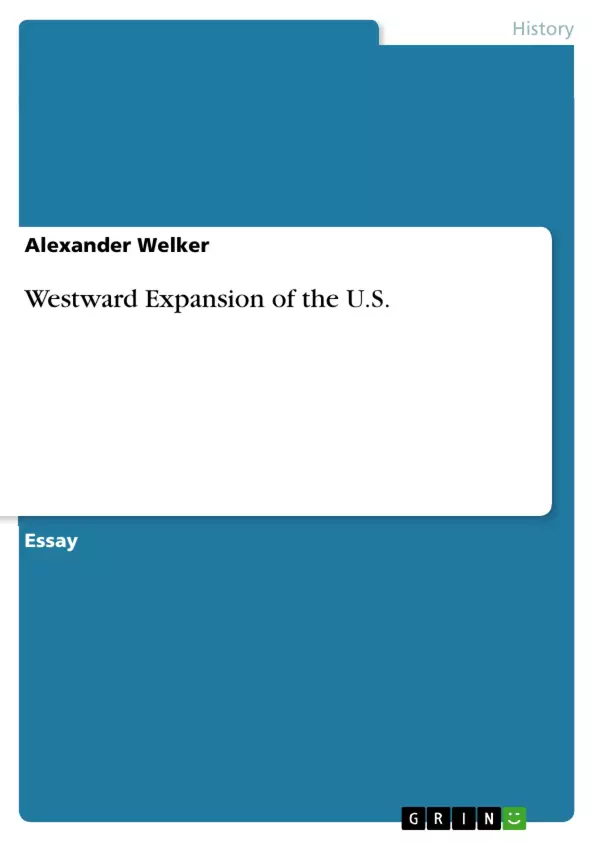In the summer of 1845 the editor and columnist John O’Sullivan published an article in the Democratic Review that promoted the idea of westward expansion of the United States. He created a famous term called “Manifest Destiny” suggesting that it was America’ s destiny to expand its western borders to the Pacific ocean by conquering the entire North American continent in order to bring to it American democracy and the advantages of the market. “Our manifest destiny [is] to overspread the continent allotted by Providence for the free development of our yearly multiplying millions. This we have seen done by England, our old rival and enemy; and by France”. In the American public the idea of migration beyond the Mississippi territory was met with an enthusiastic interest, than America’s population grew dramatically and additional land for settlement was required. The westward expansion, however, destroyed the political balance regarding the issue of slavery that held the nation for decades together and even dramatically intensified the conflict between the Southerners and the Northerners. By 1860 the North and the South grew to such an extent apart resulting in the inevitable secession of eleven of the fifteen slave states from the Union and creation of a new nation called the Confederate States of America. The westward expansion subsequently led to the bloodiest conflict in the young American history, the American Civil War. The aim of this paper is to examine the westward expansion and to explain how it exacerbated sectional differences in the first half of the 19th century.
Inhaltsverzeichnis (Table of Contents)
- Westward Expansion of the United States
- The Missouri Compromise
- The Texas Annexation
- The Mexican-American War
- The Wilmot Proviso
- Popular Sovereignty
Zielsetzung und Themenschwerpunkte (Objectives and Key Themes)
This paper explores the westward expansion of the United States in the first half of the 19th century, examining how this territorial expansion exacerbated sectional differences between the North and South.
- The Missouri Compromise and the emergence of sectional tensions
- The annexation of Texas and its role in fueling the conflict over slavery
- The Mexican-American War and its impact on sectional divisions
- The Wilmot Proviso and the ongoing debate over the expansion of slavery
- The concept of popular sovereignty and its implications for the future of slavery
Zusammenfassung der Kapitel (Chapter Summaries)
The paper begins by examining the Missouri Compromise of 1820, which attempted to maintain a balance between free and slave states but ultimately revealed the deepening divisions between the North and South. The second section focuses on the annexation of Texas, highlighting the opposition from the North and the support from the South. It details how this event further exacerbated sectional tensions and contributed to the growing conflict over slavery. The third section explores the Mexican-American War, its impact on sectional divisions, and the increasing opposition to the war from the North. The fourth section analyzes the Wilmot Proviso, a measure proposed to prevent the expansion of slavery in newly acquired territories, and its failure to achieve legislative approval. The final section examines the concept of popular sovereignty, which proposed that citizens of each territory should decide on the status of slavery, and its implications for the future of slavery in the United States.
Schlüsselwörter (Keywords)
This work explores key terms and concepts related to the westward expansion of the United States and its impact on sectional differences. These include Manifest Destiny, the Missouri Compromise, Texas annexation, the Mexican-American War, the Wilmot Proviso, and popular sovereignty. Additionally, the paper focuses on the institution of slavery, its influence on national politics, and the growing tensions between the North and South.
- Quote paper
- Alexander Welker (Author), 2012, Westward Expansion of the U.S., Munich, GRIN Verlag, https://www.grin.com/document/229706



